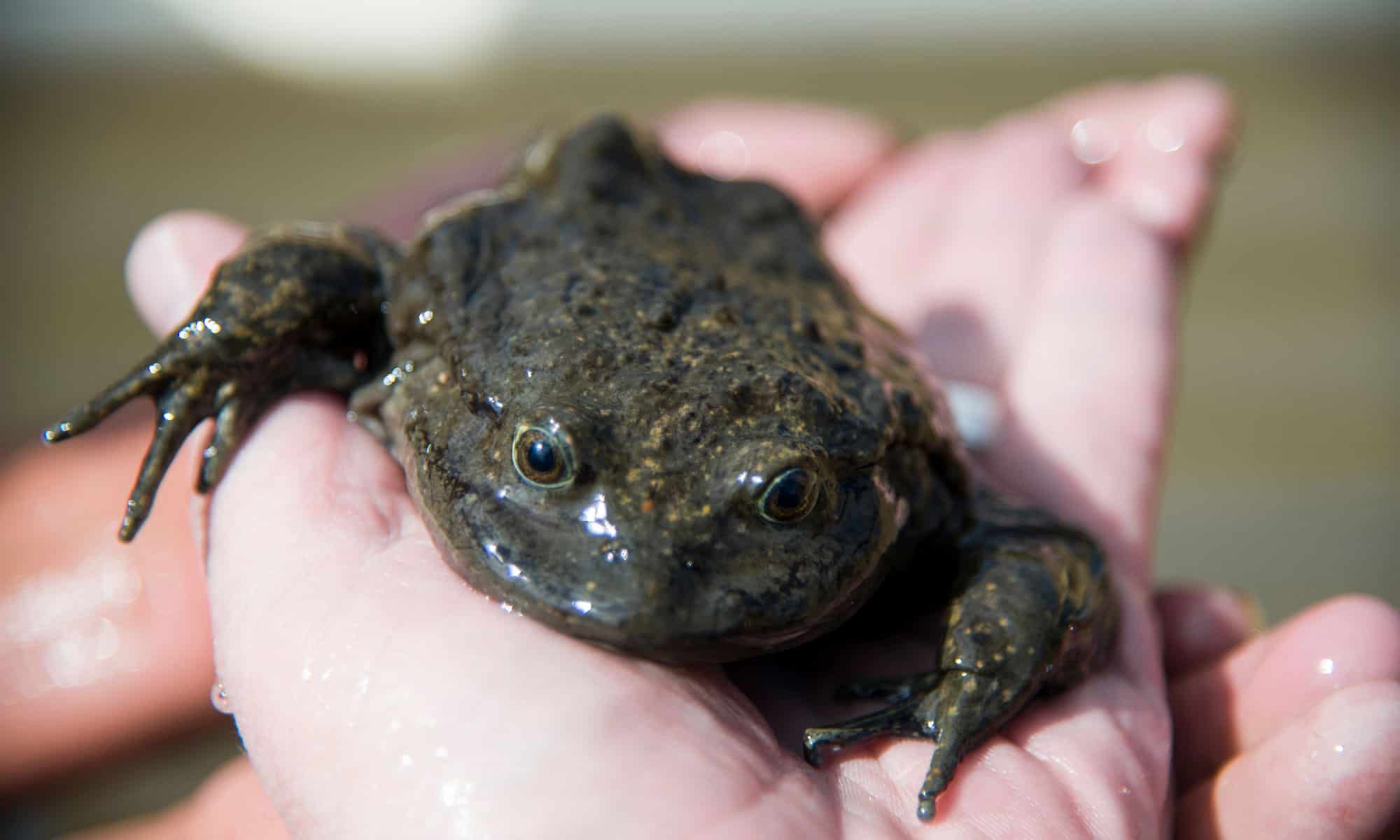A Frog Like No Other
Imagine a frog that lives its entire life underwater, never needing to surface for air. Meet the Titicaca water frog, one of Earth’s most fascinating creatures and the world’s largest aquatic frog. This denizen of Lake Titicaca, nestled high in the Andes Mountains, possesses a unique adaptation: baggy, wrinkly skin that acts like a natural scuba tank. This remarkable feature allows the frog to absorb oxygen directly from the water, crucial in the thin air of its high-altitude home.
The Titicaca frog’s unusual appearance isn’t just for show. Its flattened head and rounded snout are perfectly suited for navigating the depths of the lake, making it an efficient predator of algae and small creatures. This quirky amphibian acts as the lake’s underwater janitor, playing a crucial role in maintaining the delicate balance of the ecosystem.
A Future Uncertain: How Many Titicaca Frogs Are Left?
Determining the precise number of remaining Titicaca frogs is a daunting task, akin to counting marbles scattered across a football field. The vastness of Lake Titicaca makes accurate population counts challenging. However, concerning signs suggest a significant decline. Scientists and conservationists are particularly alarmed by recent die-off events, some involving thousands of frogs. While the exact population remains unknown, these incidents suggest the Titicaca frog may be precariously close to disappearing.
Several factors threaten the survival of this unique species. Pollution from sewage, mining activities, and agricultural runoff contaminates Lake Titicaca, poisoning the water and disrupting the delicate balance of the ecosystem. Habitat degradation further compounds the problem. Construction and human activities disrupt the lake’s natural processes, impacting water quality and crucial breeding grounds. Furthermore, the illegal capture of these frogs for the pet trade adds another layer of pressure on their dwindling numbers.
Despite these challenges, hope remains. Researchers are working diligently to better understand the frog’s biology, behavior, and the impact of these threats. Conservation initiatives focus on restoring the lake’s health and protecting the frog’s habitat. Captive breeding programs, though in their early stages, offer a glimmer of hope for the future, providing a potential safety net should wild populations continue to decline.
Unveiling the Mysteries: What is the Titicaca Frog?
The Titicaca frog, scientifically known as Telmatobius culeus, is a truly remarkable amphibian. This fully aquatic frog spends its entire life in the chilly, oxygen-scarce depths of Lake Titicaca, a testament to its remarkable adaptations. Its most striking feature is undoubtedly its incredibly saggy, wrinkled skin, which has earned it the rather unfortunate nickname of “scrotum frog.” However, this unusual adaptation is essential for survival. The extra skin surface area allows the frog to absorb more oxygen from the water, a crucial adaptation in the oxygen-poor environment of Lake Titicaca.
While its appearance might be unusual, the Titicaca frog plays a vital role in its ecosystem. As the largest fully aquatic frog in the world, reaching lengths of up to 14 cm and weighing over 250 grams, it holds a significant place in the food web. Sadly, this fascinating creature is facing an uncertain future.
The Titicaca Frog: Why is it Endangered?
The Titicaca water frog, uniquely adapted to its high-altitude home, is staring down an uncertain future. Once abundant in the depths of Lake Titicaca, this remarkable species is now classified as critically endangered. Several factors contribute to this alarming situation, making the conservation of the Titicaca frog an urgent concern for scientists and conservationists alike.
Pollution poses one of the most significant threats. Lake Titicaca, the largest lake in South America, is under constant pressure from human activities. Mining operations, often located nearby, release harmful chemicals and heavy metals into the water, contaminating the lake and disrupting the delicate life cycle of the Titicaca frog.
Agricultural practices also contribute to the problem. Runoff from farms carries fertilizers and pesticides into the lake, further contaminating the water and contributing to a phenomenon known as eutrophication. This process, fueled by excess nutrients, can lead to algal blooms that deplete oxygen levels in the water, harming fish and other aquatic life, including the Titicaca frog.
Climate change exacerbates these challenges. As global temperatures rise, so does the temperature of Lake Titicaca, potentially exceeding the frog’s tolerance levels. Shifts in precipitation patterns can also disrupt the lake’s delicate balance. These changes in climate impact food availability, potentially disrupting the delicate food web and pushing species like the Titicaca frog closer to the brink.
Overharvesting adds yet another layer of pressure. In some cultures, the Titicaca frog is considered a delicacy or believed to possess medicinal properties. This demand, coupled with its already declining numbers, only worsens the situation.
The plight of the Titicaca frog underscores the interconnectedness of environmental threats. While each threat—pollution, habitat loss, climate change, and overharvesting—presents a significant challenge on its own, their combined impact creates a dire situation for this unique species. Protecting the Titicaca frog requires a multi-pronged approach, addressing these interconnected issues to ensure the survival of this fascinating and important inhabitant of Lake Titicaca.
Exploring Other Fascinating Creatures:
Interested in the natural world? Dive deeper with these captivating creatures:
- Learn about the nutritional benefits and preparation of silkie chicken meat.
- Discover the mysterious tentacled snake and its unique hunting techniques.











